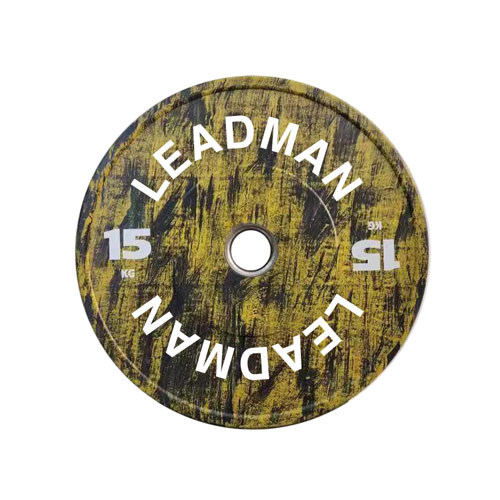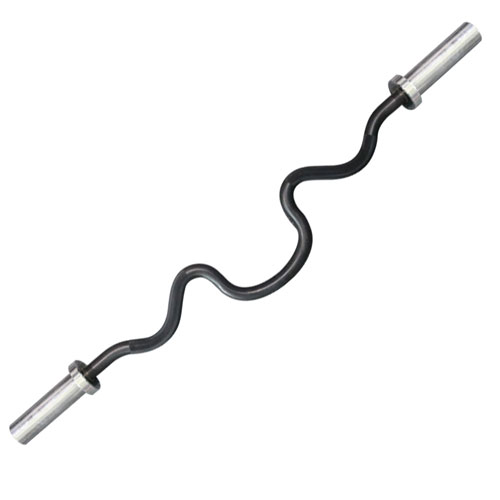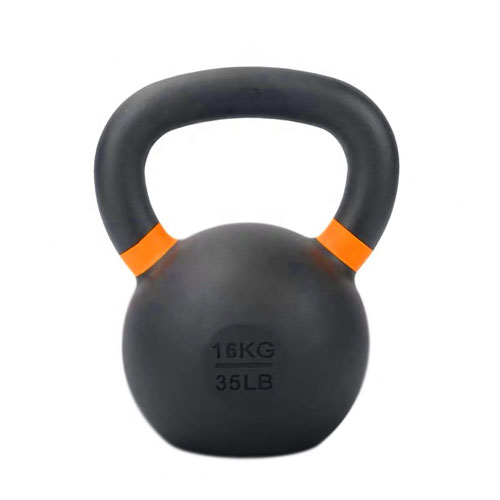Come rimuovere la ruggine dai bilancieri: Una guida completa

A rusty barbell is a common sight, particularly in home gyms where equipment might not receive the same level of care and attention as in a commercial setting. The damp air, fluctuating temperatures, and occasional spills can all contribute to the formation of rust on your cherished weightlifting apparatus. This isn't just an aesthetic issue; a rusty barbell poses significant safety risks. Rust weakens the metal, potentially leading to fractures or breakage during use, resulting in serious injury. Furthermore, a compromised barbell can affect your workout, making it difficult to maintain proper form and potentially hindering your strength gains.
This blog post will equip you with the knowledge and techniques to effectively remove rust from your barbell, restoring its functionality and safety. We'll explore a range of methods, from simple home remedies to more advanced techniques. However, it's important to set realistic expectations: some rust damage may be too extensive for DIY solutions and might require professional intervention.
Valutare i danni: Di quanta ruggine stiamo parlando?
Before embarking on any rust removal process, carefully assess the extent of the damage. Two main types of rust are crucial to identify:
Ruggine superficiale: This is characterized by a reddish-brown coating on the barbell's surface. It’s usually relatively easy to remove and doesn't significantly compromise the barbell's structural integrity. Surface rust often appears as a thin layer, easily scraped off with a fingernail.
Ruggine da vaiolatura: This is more serious. Pitting rust involves the corrosion penetrating deeper into the metal, creating pits and holes. This weakens the barbell considerably and poses a higher risk of failure during use. Pitting rust is often darker and more ingrained in the metal than surface rust.
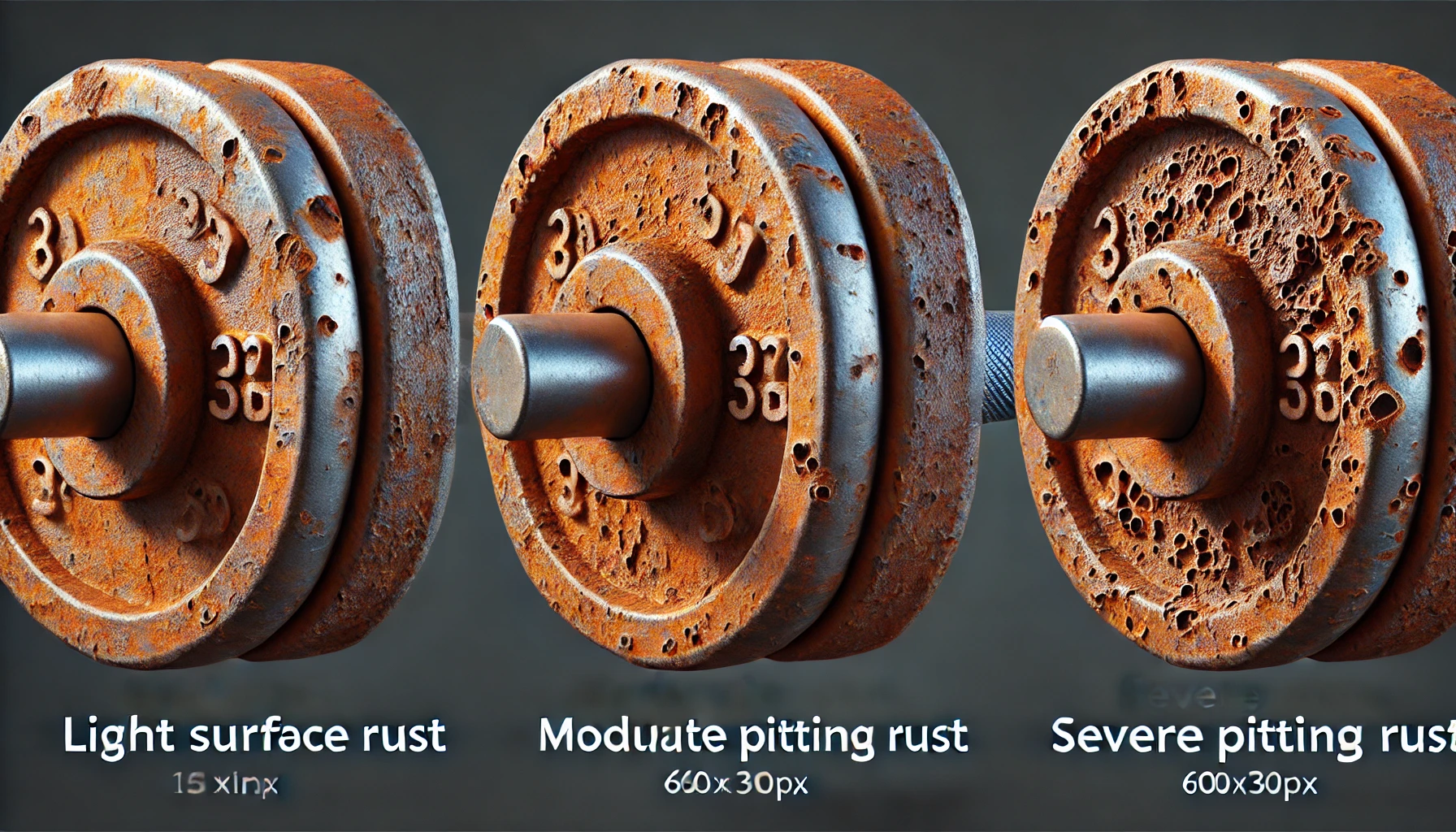
Di quanta ruggine stiamo parlando?
La determinazione della gravità della ruggine guiderà la scelta del metodo di pulizia. La ruggine superficiale leggera può spesso essere affrontata con semplici tecniche di pulizia. La ruggine moderata può richiedere approcci più aggressivi, mentre quella grave spesso richiede l'intervento di un professionista o la sostituzione del bilanciere.
La sicurezza prima di tutto: Attrezzature di protezione e spazio di lavoro
La rimozione della ruggine comporta l'uso di sostanze chimiche aggressive e materiali abrasivi, per cui la sicurezza è fondamentale. Indossare sempre i seguenti indumenti:
- Guanti: Protect your hands from chemicals and sharp edges. Choose heavy-duty gloves suitable for the chosen method.
- Protezione degli occhi:Gli occhiali di sicurezza o le mascherine proteggono gli occhi dai detriti volanti e dagli schizzi di sostanze chimiche.
- Protezione delle vie respiratorie:Una maschera antipolvere o un respiratore sono fondamentali, soprattutto quando si utilizzano strumenti abrasivi o rimuoventi chimici, per evitare l'inalazione di particelle o fumi nocivi.
Establish a well-ventilated workspace, ideally outdoors. If working indoors, ensure adequate ventilation to minimize exposure to fumes. Proper disposal of used materials is also crucial. Follow local regulations for disposing of chemical waste and sharp objects.
Metodo 1: Pulizia semplice - Per la ruggine superficiale leggera
For barbells with light surface rust, a simple cleaning might suffice. This involves using a wire brush to physically remove the rust.
Selezione della spazzola metallica: Several types of wire brushes are available. Steel wool is effective but can leave scratches. Brass wire brushes are gentler and less likely to damage the barbell's finish. Choose the brush appropriate for the barbell's material and the severity of the rust.
Processo di pulizia: Apply soapy water to the barbell. Using firm but controlled strokes, scrub the rusted areas with the wire brush. A scrubbing pad can augment the cleaning power, especially in crevices. Rinse thoroughly with clean water to remove all traces of soap and rust particles. Finally, dry the barbell completely with a clean cloth.
Metodo 2: ammollo nell'aceto - Un approccio naturale
Vinegar's acidity effectively dissolves rust. This method is suitable for moderate surface rust and is environmentally friendly.
Processo di ammollo: Submerge the rusty barbell in a container large enough to fully immerse it. Fill the container with white vinegar, ensuring the barbell is completely covered. The soaking time depends on the rust severity; light rust might only require a few hours, while heavier rust may need up to 24 hours or even longer.
Miglioramento dell'efficacia (facoltativo): Adding salt to the vinegar solution enhances its rust-removing capabilities. The salt acts as an electrolyte, speeding up the chemical reaction.
Pulizia post-sciacquo: After soaking, remove the barbell and rinse it thoroughly with water. Use a wire brush or scrubbing pad to remove any remaining loosened rust. Dry thoroughly.
Metodo 3: Pasta di bicarbonato di sodio - Abrasione delicata
Per le aree delicate o per la ruggine più leggera, una pasta di bicarbonato di sodio offre un approccio più delicato.
Preparazione della pasta: Mix baking soda with water to form a thick paste. Apply the paste to the rusted areas using a cloth or sponge.
Applicazione e lavaggio: Gently scrub the paste onto the rusted surface using a soft-bristled brush or a non-abrasive cloth. Avoid excessive scrubbing, which could damage the barbell.
Risciacquo e asciugatura:Sciacquare accuratamente il bilanciere con acqua per rimuovere ogni traccia di pasta e asciugare completamente.
Metodo 4: Rimozione della ruggine commerciale - Per la ruggine ostinata
Gli antiruggine commerciali offrono soluzioni più efficaci per la ruggine ostinata.
Selezione del prodotto: A wide array of commercial rust removers is available in gels, liquids, and sprays. Choose a product appropriate for your barbell material and the severity of the rust.
Precauzioni di sicurezza: Always read and follow the manufacturer's instructions carefully. Wear appropriate protective gear (gloves, eye protection, respirator). Work in a well-ventilated area.
Applicazione: Apply the rust remover according to the manufacturer's instructions. This may involve brushing, spraying, or soaking. Allow sufficient time for the product to work its magic.
Smaltimento:Smaltire l'antiruggine usato secondo le istruzioni del produttore e le normative locali.
Metodo 5: Elettrolisi - La tecnica avanzata
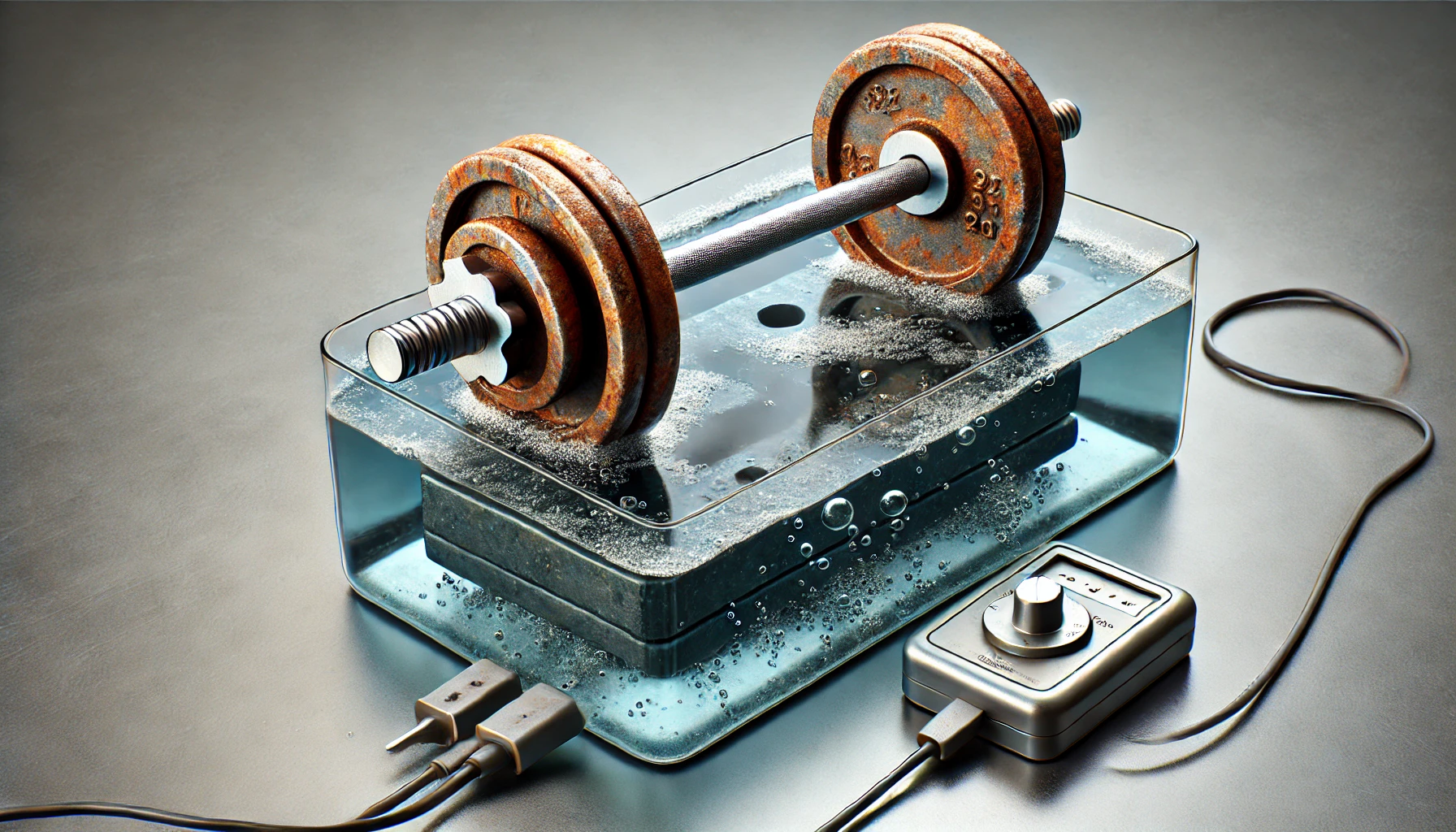
Elettrolisi - La tecnica avanzata
L'elettrolisi è una tecnica più avanzata che rimuove efficacemente la ruggine senza danneggiare il metallo sottostante.
Spiegazione del processo: Electrolysis uses an electric current to dissolve rust. The rusty barbell acts as the cathode (negative electrode), while another piece of metal (like a steel plate) serves as the anode (positive electrode). Both are submerged in an electrolyte solution (like baking soda and water). The current pulls the iron oxide (rust) from the barbell and deposits it on the anode.
Materiali necessari:È necessaria una fonte di alimentazione (un caricabatterie funziona bene), un contenitore per contenere la soluzione elettrolitica, la soluzione elettrolitica stessa, il bilanciere arrugginito (catodo) e un anodo sacrificale.
Impostazione: Connect the positive terminal of the power source to the anode and the negative terminal to the cathode. Submerge both in the electrolyte solution, ensuring they don't touch.
Vantaggi e svantaggi:L'elettrolisi è molto efficace, soprattutto per gli oggetti fortemente arrugginiti, ma richiede attrezzature più specializzate e conoscenze tecniche.
Post-trattamento: Proteggere il bilanciere
Una volta rimossa la ruggine, è fondamentale prevenirne il ritorno.
Asciugatura accurata:Asciugare completamente il bilanciere per evitare che l'umidità provochi un'ulteriore formazione di ruggine.
Rivestimento protettivo: Apply a protective coating to prevent future rust. Options include oil (WD-40, gun oil) or specialized rust-preventative paint.
Quando rivolgersi a un professionista
If the rust damage is severe (extensive pitting, significant weakening of the metal), attempting DIY methods might be futile or even dangerous. In such cases, consider seeking professional help from a metal restoration specialist. They have the expertise and equipment to restore or replace severely damaged barbells.
Conclusione: Un futuro senza ruggine
Removing rust from your barbell requires careful assessment and the selection of an appropriate method. Simple cleaning is sufficient for light surface rust, while vinegar soaking, baking soda paste, or commercial rust removers can handle moderate rust. Electrolysis is an advanced option for heavily rusted barbells, but professional help may be necessary for extensive damage. Remember, preventing rust through proper storage and regular maintenance is key to keeping your barbell in optimal condition.
Fare riferimento al blog >>.Come scegliere il giusto magazzino per le piastre di peso per la vostra palestra



